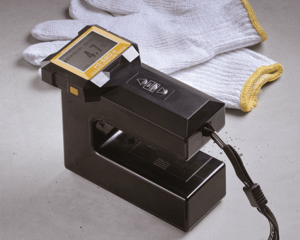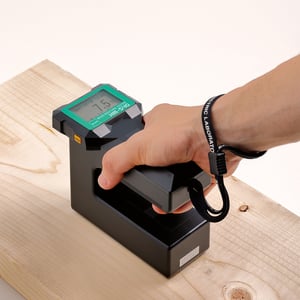 What would you do with a compass that didn’t point toward true north? Or a watch that never told the correct time? Or a car speedometer that told you that you were driving faster or slower than you actually were?
What would you do with a compass that didn’t point toward true north? Or a watch that never told the correct time? Or a car speedometer that told you that you were driving faster or slower than you actually were?
No matter how high-caliber your moisture meter (or composition meter) is, an instrument is only as strong as its calibrations. There’s a lot riding on getting a correct reading: Concrete foundations can crumble, stored grain harvests can spoil, and pharmaceuticals can degrade or become toxic.
So, how can you check that your moisture calibrations are correct? Here’s what you need to know about your moisture meter:
Calibrate Carefully
One of the best ways to ensure your moisture meter has the right calibration is by properly calibrating your moisture meter in the first place. For example, the HB300 Programmable Moisture Meter has up to 10 calibrations, but they must be precisely calibrated to be effective.
With multiple customizable calibrations, each of these settings should be determined by taking three to five readings. These readings should be meticulously taken with known, laboratory-quality samples that cover your expected moisture content range. You then enter these ranges into the instrument.
With the HB300, these calibrations are then stored for the life of the instrument, or at least as long as you need the calibrations stored.
Calibrating and Managing Your Moisture Meter: Control What You Can
There are times when the surrounding environment can impact the accuracy of your moisture meter, which may make you question the calibration. Many of Kett’s moisture meters, like the PM650 Advanced Portable Grain and Seed Moisture Meter, come with a long list of preset calibrations. Temperature and moisture variations can be significant enough to impact the accuracy of a reading. That's why many of Kett's instruments included integrated temperature compensation.
What can you do to assure that you are getting the best possible reading using your moisture meter?
- Test multiple samples (as many as three), average your results, and increase your number of readings if you find an outlying reading.
- Take samples from various parts of the entire product.
- Allow samples to cool if they’ve been in a dryer or to warm up if they have been in a cool, contained space, as samples that are too hot or too cold can impact your reading.
- Test the consistency of your instrument by comparing the moisture readings of the same sample with multiple moisture meters. A moisture meter that is not giving accurate, repeatable readings may need to be serviced.
- Regularly replace the batteries in handheld moisture meters, and store them for extended periods of time with the batteries removed. Use battery testers or insert new batteries to check the strength of your batteries if you are getting confusing readings.
Additional Calibration Tips
What should you know about moisture meter calibration? There are a few things that can impact your readings, which you should take into account when planning to calibrate your meter or if you suspect you aren’t getting an accurate reading:
- Excessive humidity in the air can affect calibration.
- Foreign debris in the material you are testing can impact your results and make for a false reading.
- A meter’s standard can be disturbed after multiple uses.
Sometimes There’s an Easier Way
Kett has a wide range of moisture meters available with built-in, pre-verified factory calibrations. From this selection of moisture meters, there may be one with established presets so you don’t ever have to worry about setting your own accurate calibrations.
For example, our PR930 Handheld Instant Rice Flour Moisture Meter has calibrations for several different varieties of rice as well as rice flour and wheat. Our HI520-02 Instant Concrete and Mortar Moisture Meter has six different factory settings to read moisture levels in concrete, drywall, gypsum and other solids.
Before choosing a moisture meter, consult with our team of qualified engineers. We are well-versed in the capabilities of each instrument, as well as the extensive list of calibrations available to ensure a perfect, lab-tested, and preset calibration. Once you have it, we’re still here to support you if you have questions about your calibrations.
From selecting and purchasing the correct instrument to troubleshooting calibrations and making repairs when necessary, we are with you every step of the way. Want to talk more about how to get the most accurate calibrations from the right moisture meter? Reach out to us today.


